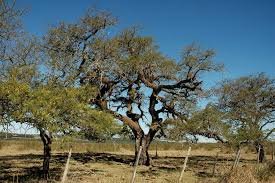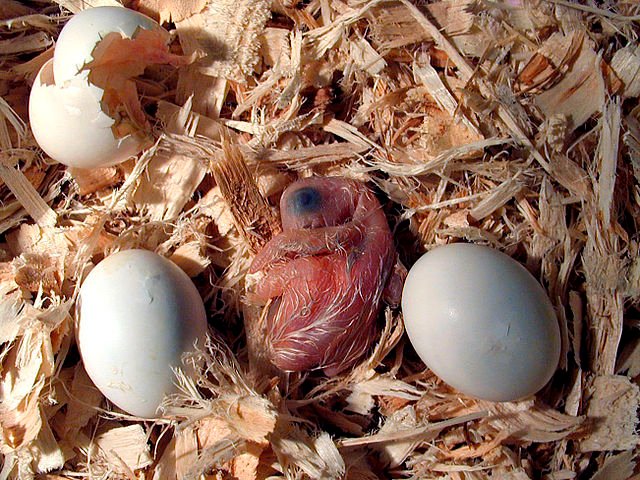If you ever wondered where is your cute tame Monk Parakeet or Quaker parrot as he is often called coming from, continue reading this article to find out your bird origin. It is important to know want kind of environment makes the Monk parakeet feels like at home. What does its natural habitat look like?
Quaker parrot originates from Argentina, South America. And they are common in the whole of South America. Also, they are introduced in many other countries including some European Countries, Israel, Bahamas, Japan, South Korea, USA, and others.
Let us take a look at conditions in the place where quaker parrots originate from. Argentina. What food can they find there? Where they find to nest and where do they spend a life. What are their main predators? And in what weather conditions they live.
Quaker Parrot in Argentina

Most of Argentina has a relatively temperate Climate. A big part of central Argentina has hot and humid summers and cool and dry winters. Quaker parrot is inhabiting most of the central Argentina territory.
The temperature in summer reaching 28 °C (82 °F), and winter temperatures 16 °C (61 °F). The region receives approximately 1200 mm annual rainfall. Most of it during spring and summer season.
While researching about parrot quaker in Argentina I stumbled across the research of Jessica R. Eberhard. She studied parrot Quaker breeding behavior for 2 years (1993-1994) in northern Entre Rios Province, Argentina. Quaker parrot likes semi-open habitats. Most of that area is covered with the xerophytic type of trees. Xerophytic trees are hardy types of plants, adapted to survive in an area with not much of water. This Area where quaker parrots have been building nests is grown with 3 types of xerophytic trees: Acacia caven, Prosopis affinis, and Prosopis nigra.

Quaker parrot Nesting
Most of the nests were made in Prosopis nigra trees, in the tallest trees in the area. They are specific for building nests on trees instead of inhabiting holes inside trees like other types of parrots. Quaker parrot builds their nest in clusters and form colonies. Jessica R. Eberhard studied Colonies that count 25 nests. It is a male duty to build a nest. The nest is usually built with thorny twigs. Male is building a nest and also doing maintenance, and feeding the female while she is incubating eggs, later both males and females are taking care of chicks. Nest can contain 4 chambers, with different entrances.
Pair is monogamous, they stay together for a lifetime. Most of the time they spend in the vicinity of the nest. Chicks stay with parents usually for 3 months in the wild, and after pair starts nesting again, chicks are already independent. While in captivity pair can stay with chicks up to 2 years and chicks will even help to feed new offspring.

Quaker Parrot food in Nature
Quaker parrot food in Argentina, country of its origin is primarily nuts, seeds, and fruits. They have a strong jaw which helps them to open nuts and different types of seeds. South America is full of edible fruits in which parrots can enjoy. Here are some of them:
- Cherimoya, delicious apple-like fruit in mountains of South America,
- Passion Fruit, Smooth Dark purple fruit that can be found in Brasil Argentina Paraguay
- Acai fruit of Brasilian Palm, round dark and blackish berry
- Pineberry White strawberry unique for South America
- …and many more… this article would be too long if I continue to add all South American fruits.,so I will continue more about Quaker Parrot’s homeland.
What are Quaker parrot predators in nature!?
Quaker parrot is prayed by some predator Animals of South America. One of them is Ocelot, a cat with a length of 1 meter, nocturnal hunter. It prays with birds, small mammals, and reptiles. A lot of different snakes can also pray on Monarch Parrot, like an anaconda. Birds of prey present danger for Quaker parrot in Argentina, hawks, eagles can hunt on Quaker parrot. Toucans are known to destroy birds’ nest and destroying Quaker parrot eggs.
Quaker Parrot Overpopulation
Also because of overpopulation in Argentina, there is a measure of control number of parrots. Parakeets at ranches are subject to annual control measures. Even thou they are working on controlling the population of Quaker parrot, humans are responsible for the Quaker parrot boom, by making farmland, and planting trees that are suitable for Quaker parrot nesting. The population boom has been associated with planting the eucalyptus forest wich helps Quaker parrot build protected nests in an environment where there is no competition or predators. Also, Humans have spread Monarch parrot to a different area of the world as a pet.
Let’s see what else part of the world is Quaker parrot home.
Quaker parrot in rest of South America
Besides Argentina Quaker parrot is also very common in the rest of South America. They inhabit most of Brazil and Uruguay, where they are considered as pests for farmers, because of overpopulation.
Quaker parrot in the U.S.
Escaped or released pet parrots are inhabiting 23 U.S states. Bird watcher has noticed 56 different parrot species established in the United States. Monarch parrots have been the first time spotted in Hyde Park in 1968. The first nest has been spotted in 1970. Quaker parrot has been the most established parrot species in the U.S. They represent a third of all parrots in the US. Many places besides New York have self-sustained colonies of Quaker parrot.
Quaker parrot in Europe
The biggest population of Monarch parrot has Madrid. More than 10 000 parrots. The first time Quaker parrot has been seen in Madrid 1985. And they are a common sight in Barcelona parks, as common as pigeons. Other places that have a self-sustained population of Quaker parrots in Europe are Madrid, Zaragoza, Barcelona, Cadiz, Seville, Torremolinos, Málaga, Valencia, Roquetas de Mar, the Canary Islands, and Majorca in the Balearic Islands. Also apart from Spain, the population of Quaker parrot is existing in the UK. The UK department of the environment has declared them a threat to infrastructure and is working on their relocation. There are few groups of parrakeet in Belgium, Brussels.
Quaker parrot in Asia
In Asia, the quaker parrot is released or Escaped to the wilderness in Japan and South Korea, where they now have self-sustained colonies. Quaker parakeet is easily adapting to the urban areas and making nests in buildings, electricity pols or other parts of urban architecture. That’s the reason they succeed in populating those urban regions.
Are quaker parrot banned in your place? Check out our list of countries where Quakers are legal. You are allowed to own Quaker parrot in these US Countries:
Alabama, Alaska, Arizona, Arkansas, Delaware, Florida, Idaho, Illinois, Indiana, Iowa, Louisiana, Maryland, Massachusetts, Michigan, Minnesota, Mississippi, Missouri, Montana, Nebraska, Nevada, New Hampshire, New Jersey – Legal with a permit, New Mexico, New York, North Carolina, North Dakota, Ohio – Legal but wings must be clipped, Oklahoma, Oregon, South Carolina, South Dakota, Texas, Utah.
If your country is not on list than it is probably illegal to keep Quaker Parrot. But still double-check with local laws.
Conclusion:
Quaker parrot is believed to originate from Argentina, South America. Where he inhabits open-woodlands and making nests in big colonies. His popularity as pet, and also his ability to adapt to the environment, allowed him to spread to a different region of the world. So now we can find wild, self-sustained populations of Quaker parrots that are descendants of Pets brought from South America. Most of those populations are in the US. Some of them in Europe, mostly Spain. And there is a population of Quaker parrot in Asia also. Inhabiting Japan, and South Korea.



